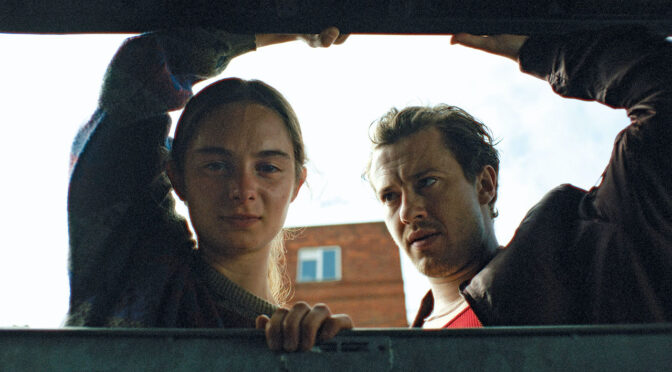 Luna Carmoon’s debut feature, HOARD, is a bold and fascinatingly repulsive tale of trauma and sexual awakening. Where other films might reject some of Carmoon’s juxtapositions, HOARD jumps head-first into the trash pile. Some of the more opaque diversions make the film a little too skittish as it moves towards a climax. Still, the boldness of Carmoon’s imagery and Saura Lightfoot Leon’s performance will linger even longer than the imagined smell of trash in your nostrils.
Luna Carmoon’s debut feature, HOARD, is a bold and fascinatingly repulsive tale of trauma and sexual awakening. Where other films might reject some of Carmoon’s juxtapositions, HOARD jumps head-first into the trash pile. Some of the more opaque diversions make the film a little too skittish as it moves towards a climax. Still, the boldness of Carmoon’s imagery and Saura Lightfoot Leon’s performance will linger even longer than the imagined smell of trash in your nostrils.
The film opens in 1984 with Maria (Lily-Beau Leach) out dumpster diving with her mother, Cynthia (Hayley Squires). They return home to their rubbish-strewn abode, filled with detritus clearly there as a result of a mental block preventing Cynthia from disposing of it. Although her love and care for Maria are evident, this obsession culminates in Maria needing to move to the foster home of Michelle (Samantha Spiro). We pick up with Maria again ten years later when the arrival of Michael (Joseph Quinn), a former foster child of Michelle’s, surfaces both sexual tension and an uneasy recall of her childhood memories of her mother.
From the beginning, HOARD revels in the mess and chaos of Cynthia and Maria’s home; a superb birds-eye pull back from the pair reveals the full extent of Cynthia’s obsessive compulsions. Maria finds she places her hands in noxious things and never seems prepared in mind or equipment for her school day. Nevertheless, a motherly love shines through in Hayley Squire’s performance, especially in one cathartic and satisfying (if ill-advised) interaction with one of Maria’s more buttoned-up teachers. However, when the film shifts to ten years later, with Maria now played by Saura Lightfoot Leon, HOARD moves up a gear.
“As the film develops, Quinn and Leon put across an almost feral chemistry that blends superbly with the sensory nature of the rest of the film.”
The film’s second segment focuses primarily on Maria’s relationship with the visiting Michael and how she handles memories of her childhood surfacing (both in reaction to Michael’s presence and a different unexpected reminder of those days). The sexual tension with Michael – ostensibly near-engaged to another woman, Leah (Ceara Coveney), and expecting a child with her – is apparent from the start. As the film develops, Quinn and Leon put across an almost feral chemistry that blends superbly with the sensory nature of the rest of the film.
The manner in which Carmoon harks back to Maria’s childhood draws us back alongside her characters. Frequent – and sometimes sudden – use of warm lighting in key moments is perhaps not subtle but is tremendously effective. How Maria acts out her love for her mother seems (literally) disgusting and messy, but the wonderfully warm character work established in that first section keeps us with her despite the mounting piles of trash. The visceral clash of a difficult coming-of-age against repulsive sensory imagery strongly echoes Julia Ducournau’s breakout feature RAW. HOARD may be less obviously shocking than RAW’s body-horror approach, but the same combination of making emotions almost tactile in a mesmerisingly repulsive manner informs the outlook of both.
“The visceral clash of a difficult coming-of-age against repulsive sensory imagery strongly echoes Julia Ducournau’s breakout feature RAW. HOARD may be less obviously shocking […] but the same combination of making emotions almost tactile in a mesmerisingly repulsive manner informs the outlook of both.”
However, as Maria frays further in the third act, the film threatens to do so also. The plot strand involving Leah and Michael’s unborn child never quite seems to gel with the deep dive into Maria’s reaction to desire intermingling with lingering trauma (save for a brief line at Leah’s final on-screen moment). However, the impetus built throughout the film and the sheer conviction of Leon’s performance gives it a momentum that sees it through to a satisfying – but still far from sanitary – conclusion.
HOARD has some elements which could be tidied up. Still, the sum of this precarious pile of performances, imagery, and characters is a film of deep-rooted emotion and a beautiful mess by design.

